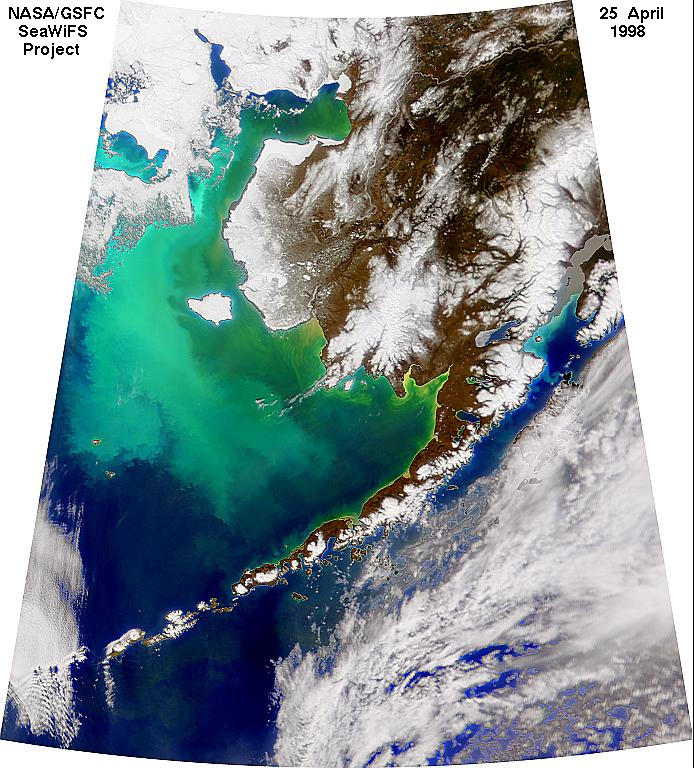According to an article in The Guardian on October 15, a California businessman illegally dumped 110 tons of iron into the ocean off the western coast of Canada this July in violation of two international moratoria on such activity. Russ George evidently wanted to stimulate the growth of phytoplankton in order to sell carbon credits for the carbon dioxide that photosynthesizing organisms would take out of the atmosphere.
Satellite images indicate that the iron has spawned an artificial plankton bloom as large as 10,000 square kilometers (~3,861 square miles). “George claims that the plankton will absorb carbon dioxide and then sink to the ocean bed – a geoengineering technique known as ocean fertilization that he hopes will net lucrative carbon credits. The entrepreneur, whose foray came to light only this week, even duped the National Oceanic and Atmospheric Administration in the United States into lending him ocean-monitoring buoys for the project. Canada’s environment ministry says it is investigating the experiment, which was carried out with no government or scientific oversight. A spokesman said the ministry had warned the venture in advance that its plan would violate international agreements. Marine scientists and other experts have assailed the experiment as unscientific, irresponsible, and probably in violation of those agreements, which are intended to prevent tampering with ocean ecosystems under the guise of trying to fight the effects of climate change” (source).
“The dump took place from a fishing boat in an eddy 200 nautical miles west of the islands of Haida Gwaii, one of the world’s most celebrated, diverse ecosystems, where George convinced the local council of an indigenous village to establish the Haida Salmon Restoration Corporation to channel more than $1m of its own funds into the project. The president of the Haida nation, Guujaaw, said the village was told the dump would environmentally benefit the ocean, which is crucial to their livelihood and culture. ‘The village people voted to support what they were told was a ‘salmon enhancement project’ and would not have agreed if they had been told of any potential negative effects or that it was in breach of an international convention,” Guujaaw said’” (Ibid.).
“It appears to be a blatant violation of two international resolutions,” said Kristina M Gjerde, a senior high seas adviser for the International Union for Conservation of Nature. “Even the placement of iron particles into the ocean, whether for carbon sequestration or fish replenishment, should not take place, unless it is assessed and found to be legitimate scientific research without commercial motivation. This does not appear to even have had the guise of legitimate scientific research.”
“It is difficult if not impossible to detect and describe important effects that we know might occur months or years later,” said John Cullen, an oceanographer at Dalhousie University. “Some possible effects, such as deep-water oxygen depletion and alteration of distant food webs, should rule out ocean manipulation. History is full of examples of ecological manipulations that backfired.” Clay Dillow, writing for Popsci.com, states: “The very idea of geoengineering–large-scale tampering with the planet’s natural climatological or geological systems to produce a desired effect–is brazen enough, but doing so in violation of two UN conventions is flat-out ballsy.” Alyssa Danigelis, writing for Discovery News, is even more blunt: “I fear that he’s going to inspire other rogue geoengineers to act recklessly. The oceans have enough problems. Anyone intentionally taking an enormous dump in it should pay the price.”
Article by Bill Norrington

.jpg)


